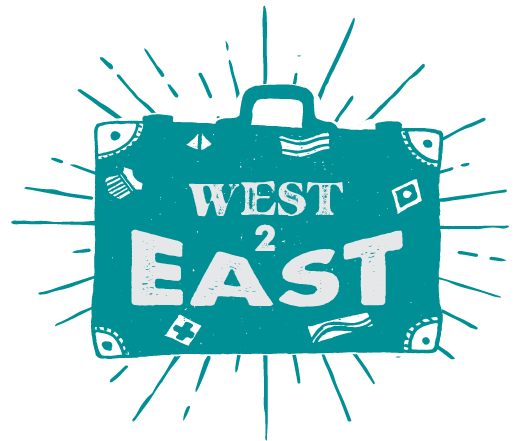Antiochia ad Cragum: A Pirate's Hideout
In a previous blog post we wrote about the “brown signs” in Turkey. These are used to denote the location of historically significant sites, and they are everywhere. On a recent road-trip to another part of the country, we noticed the brown sign below.
Though we had no idea to what this sign was referring, it sounded epic. A quick search online revealed that it was the site of an ancient city first inhabited by Cilician pirates, later by Romans, and finally, by the Ottomans. Needless to say, we decided to take a detour to check it out. We were well rewarded for our time. After exiting the main highway, we climbed for about 3 kilometers and arrived at the beginnings of the ruins.
The first thing to strike our gaze was an ancient wall at least two stories high, bordered by a wide, flat courtyard surrounding a huge marble-lined pool. This was the old bathhouse, and our research told us that underneath the courtyard lay the biggest Roman mosaic discovered in the Mediterranean region of Turkey. It is 1600 square feet! The mosaic is covered over with a blanket and layers of sand to protect it from the elements, but we had to take a peek at one of the corners.
Further exploration into the complex revealed several more large flat areas that had been covered with blankets and sand, presumably other mosaics. The ruins stretched on and on.
The best part of this city is that it is situated on the top of several peaks looking down on the Mediterranean. The views were breathtaking and we felt like we were in a lost world.
Contributing to this feeling was the lack of graffiti, trash, or other indications of modern disturbance. The ground was littered instead with broken marble pieces and countless pillars from ages past. A lot of ancient cities we have visited do not have these anymore, as they have been removed throughout history to be used in other structures or cities nearby. Antiochia ad Cragum, however, is in a more remote location, with no major cities or settlements nearby. Perhaps this is why so much of the remnants of its structures remain.
As we worked our way through the underbrush, with these relics peeking out at us from under leaves and behind bushes, we wondered aloud what the stones would say if they could tell their stories?
From the first peak we could look down to see the remains of a castle on another peak below, so we hopped into our car to see how close we could get to it. The road was steep and narrow, winding through row upon row of banana trees, and we were more than a little nervous descending, but at the end, we pulled up at the base of the castle peak. Unfortunately, we were also greeted by the red and white sign below, reading "Please No Admittance" in both Turkish and English.
After a brief moment in which we considered claiming to speak only Spanish should we encounter any angry archaeologists as we started up the trail, we decided it was probably best to stay down. The way up looked pretty steep and we weren’t prepared in terms of our clothing. Chacos are great, but they aren’t exactly mountain-climbing shoes.
As we turned back towards our car, something else caught our eye. Between the tops of two narrow peaks jutting out into the water was a land bridge. This created a tall, covered passageway from the sea into a small cove glittering far below, surrounded by rocks, caves, and steep cliffs. A winding footpath led down to the cove, and we immediately headed that direction, with visions of pirates and lost treasure filling our heads.
As we approached the cove, we saw that we were no longer alone. A family had set up camp on the rocks below and they were happily swimming and diving in the turquoise water. As we looked around the area, we wondered what secrets the caves held. What lay under the sand in that crystal clear water? Of course the pirate history of the region was foremost in our minds in that moment. It was with reluctance that we finally turned around to head back to our car, promising each other that one day we would come back and spend the whole day in this mysterious place.
If you would like to read more about Antiochia ad Cragum, you can visit the following pages:
https://antiochia.unl.edu/about
http://turkisharchaeonews.net/site/antiochia-ad-cragum
TO OUR FRIENDS IN THE WEST, KEEP LOOKING EAST!
Ginny Lou Henley
Ginny Lou is a co-founder of West2East. Originally from Alabama, Ginny Lou has called Turkey home for the past nine years. To read more about her, click here.






























